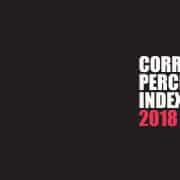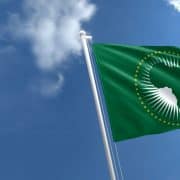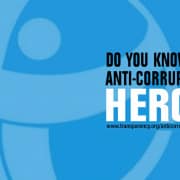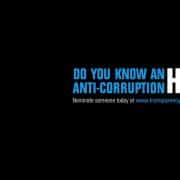|
Getting your Trinity Audio player ready...
|
By Jason Kohn
First published on the Global Anticorruption Blog
It’s long been recognised that public relations (PR) is a crucial tool in the fight against corruption. This recognition is codified in the UN Convention Against Corruption (UNCAC), Article 13 of which requires state parties to “[u]ndertak[e] public information activities that contribute to non-tolerance of corruption, as well as public education programs,” and Article 6 of which calls on state parties to “increase[e] and disseminat[e] knowledge about the prevention of corruption.”
Governments fulfil their UNCAC obligations in a variety of ways, and examples of anti-corruption public awareness campaigns are as diverse as they are numerous. A famous example of how PR can be used effectively comes from Hong Kong’s Independent Commission Against Corruption, which spends millions of dollars annually on thousands of workshops to educate public employees and private citizens about the effects of corruption and how to combat it. New York City has likewise deployed large-scale educational programming with similar success.
In addition to government-run campaigns such as these, multilateral organisations such as the UN Office on Drugs and Crime (UNODC) and NGOs like Transparency International also regularly engage in efforts to raise public awareness around corruption issues, using tools as varied as video, music, and drawing to convey their anti-corruption messages.
Critics sometimes contend that these PR campaigns consume scarce anti-corruption resources that would be better devoted to investigation or enforcement efforts. This criticism is misguided and shortsighted. Of course a badly-designed PR effort can waste resources. Yet effective anti-corruption PR helps accomplish several goals that other, “harder” anti-corruption measures are incapable or ineffective at achieving on their own:
First, PR helps change culture. This is particularly important with regard to petty corruption, which is often too small-scale and widespread for effective investigation and prosecution by law enforcement. In the case of small-time bribes to police officers and local bureaucrats, the most effective countermeasure may be to educate and empower individual people to resist, changing culture over time. An example of this is the “say no to corruption” youth education campaign prevalent in many Pacific nations. The campaign was highlighted as part of the UNODC’s International Anti-Corruption Day and uses music and poetry, in addition to more traditional educational tools, to mobilise and change behaviour among young people. Public awareness campaigns can also be used to change culture within government offices and individual organisations, thereby combating the demand-side as well as the supply-side of bribery. An example of this kind of campaign is a TV commercial, produced by UNODC, which shows low-level officials declining bribes. Messaging such as this is an important tool in the long-term work of creating an anti-corruption culture within organisations, governments, and society at large.
Second, PR facilitates the reporting of corruption. Corruption investigations are notoriously difficult to prosecute without tips from victims and whistle-blowers. PR encourages these witnesses to inform authorities by ensuring they have accurate information about how to report corruption and what their rights are if they do. By widely disseminating this information, PR helps empower more people to report corruption and, therefore, generates the largest number of possible allies for law enforcement. An example of this kind of anti-corruption PR is the FBI’s use of highway billboards to facilitate reporting of corruption in Albany, the state capital of New York. Similarly, communications campaigns can also be important within certain industries or individual companies to promote whistle-blowing and educate staff about compliance obligations. For example, part of the UK’s “flag it up” campaign against money laundering seeks to ensure that practitioners in select industries know exactly how and why to file suspicious activity reports with law enforcement, thereby increasing reporting.
Third, PR helps to increase popular support for government anti-corruption efforts. This function of PR has two distinct aspects. The first is to increase knowledge among the populace of the government’s anti-corruption efforts and notable successes. For example, the US Department of Justice issues a press release whenever it obtains a bribery or other corruption-related conviction. In nations where anti-corruption enforcement is seen as ineffectual or nonexistent, this use of PR can buttress the legitimacy of the government by dispelling notions that the government is hopelessly corrupt or incompetent. It can also be used to generate public support for enforcement efforts against popular politicians who are likely to seek to undermine those efforts by attacking their legitimacy. (Recognising this, the UNODC has published a white paper on best practices for building public support for anti-corruption efforts.) The second aspect of PR in this area is to generate political support for new anti-corruption measures, which often must be passed over the stiff resistance of the political class and other entrenched interests. An example of this popular-support-building type of PR is the Lebanese Transparency Association’s “Time to Wake Up” campaign, which sought to build political support for the implementation of UNCAC in Lebanon through the use of media advertisements, mass mailings, and protests. PR work of this sort puts pressure on a government to take its own anti-corruption efforts more seriously.
Ultimately, what makes a given anti-corruption PR campaign effective will depend on which of these goals the campaign is trying to achieve. But what unites all the different manifestations of anti-corruption PR is an effort to educate as many people as possible about corruption as an issue and, in many cases, empower those people to take action.








